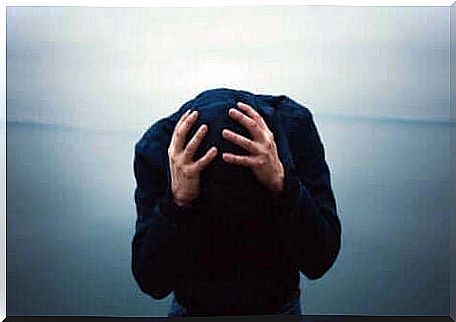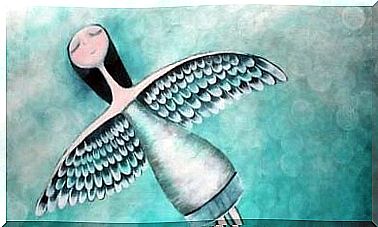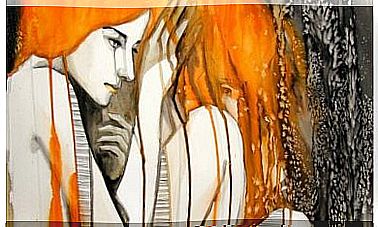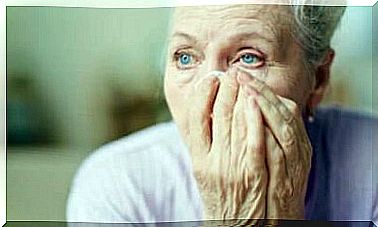The Different Types Of Bipolar Disorder

The different types of bipolar disorder have a significant impact on the mental state of the disorder and affect those around them. It is a mental disorder that oscillates between depressive and manic states. Therefore, the sufferer may go from the most intense euphoria and excessive self-esteem to a state of deep despair, anguish and negativity.
Expressions such as ” That person is a little bipolar ” or ” Today is not my day, I feel a little bipolar ” abound in our daily lives. We use expressions like these quite loosely to describe the changing moods that we humans often experience.
Although we can all experience an emotional roller coaster ride, the life of someone suffering from bipolar disorder is quite different. They have a really hard time with this complex condition.
First, no two people with bipolar disorder are alike. Each case is different.
Some follow the treatment effectively and achieve a completely normal daily life. Others, on the other hand, engage in risky behavior, do not follow medical guidelines, and are unable to adequately control their social, personal, or work life.
Let’s dive a little deeper into the different typologies of this mental illness.

The five types of bipolar disorder
Bipolar disorder is one of the most common mental disorders and also one of the most severe. We know that it affects between three and five percent of the world’s population, and although it is more common in adults, it can also appear in early childhood. We are dealing with a disorder that persists for years, and which can go into remission for some time. It can then return shortly after.
As we have seen, no person with this disorder experiences it in the same way. Some people have severe depression and only milder episodes of euphoria. Others suffer from manic episodes with greater intensity and impact. Some are stuck for several months in a condition, and others alternate between these episodes often.
All this shows that it is not only important to diagnose this disease as soon as possible, but that it is also important to know what type of bipolar disorder we are dealing with. We are analyzing them now.
Cyclotymic disorder
Cyclotymia is the mildest form of bipolar disorder. It usually occurs for the first time in adolescence, making it difficult to diagnose due to the behavioral changes that are characteristic of this phase of life. However, it can develop into situations that a family can no longer handle alone. These will be the characteristics:
- Mental instability. The person is consciously aware of his condition.
- Mild episodes of depression occur (melancholy, sadness, irritability, sleep changes and eating changes).
- Phases of euphoria, hyperactivity or tension that are not too intense; this is classified as hypomania.
- It can take months where the person’s emotions, behavior and mood are stabilized and balanced. Although depression or risky behaviors and daring exercise may soon occur sooner or later.
- The person’s family may observe that the person has a very difficult character, with very noticeable outbursts and bad mood.
Bipolar Disorder Type I
This type of bipolar disorder is usually diagnosed when the patient has experienced a manic phase that lasts more than a week, in addition to the occurrence of psychotic outbursts. These are especially serious situations where hospitalization is usually necessary.
- Not long ago, this typology went by the name of manic-depressive psychosis. The most notable manic episodes are those with violent behavior that may even include suicide attempts.
- Type I bipolar disorder can range from mild to debilitating. In severe cases, the person will have severe problems leading an autonomous life (study, work, financial aspects, etc.).
Types of bipolar disorder: Type II
The main characteristic of this typology is that it includes the mildest version of mania: hypomania. However, recurrent episodes of major depression are also more common. To diagnose this type, the person must have experienced:
- At least one hypomanic episode and more than one major depressive episode
- Sleep problems: either insomnia or excessive sleep (hypersomnia)
- Intense exhaustion
- Unexplained crying
- Suicidal thoughts
- Low self-esteem and low motivation
Bipolar disorder with rapid oscillations
We define a patient as bipolar with rapid fluctuations when they have an average of about four episodes over the course of a year. These episodes can be depressive, mixed depressive, manic or hypomanic. As a result, some people with type 1 or type 2 disorder may also have rapid fluctuations.
We know, however, that this typology is not very common. Only 10% have this characteristic within the different types of bipolar disorder.

Bipolar disorder due to another medicine or substance abuse disorder
Among the various types of bipolar disorder, this is the most non-specific. Reason? Some people do not show a specific pattern like the ones we mentioned above. However, they get this diagnosis because of their mood swings, medical history and behavior.
Many of these cases have two origins: Either a person suffers from some disease (such as schizophrenia) or addiction to certain drugs.
To conclude, we have seen that the different types of bipolar disorder define specific situations, but all are equally serious.
However, it is important to highlight a few points here. The first is that, with effective treatment, drastic mood swings can be kept under control. As a result, the patient will have a better quality of life.
Second , psychological support can be very helpful in teaching them to develop new skills and also in improving their relationship, both at work and in the family. With medical and psychological counseling, the person can achieve autonomy and satisfaction in life.









